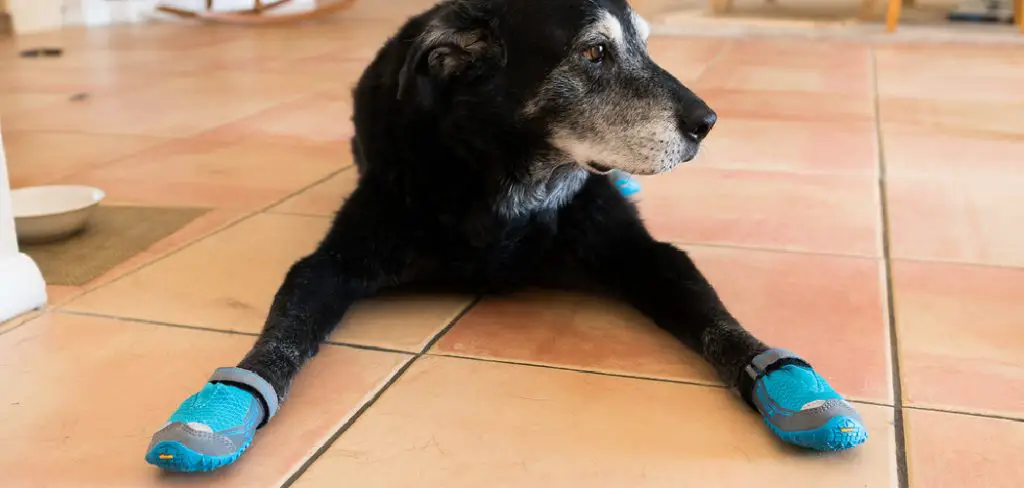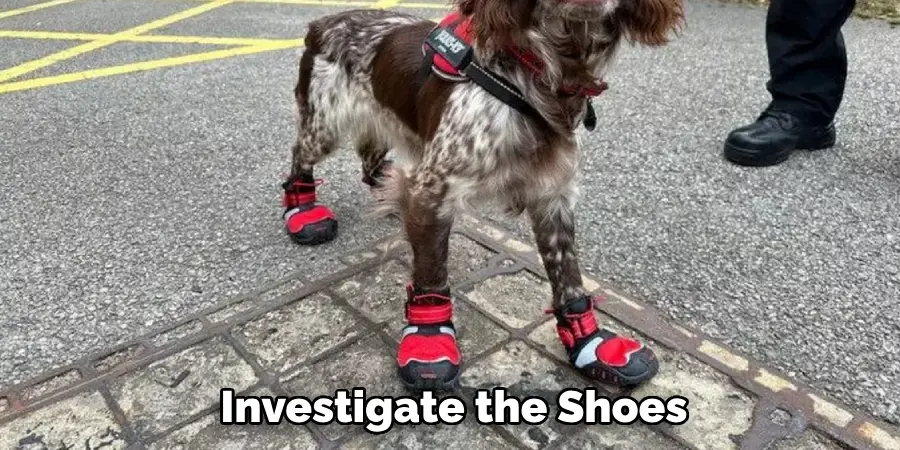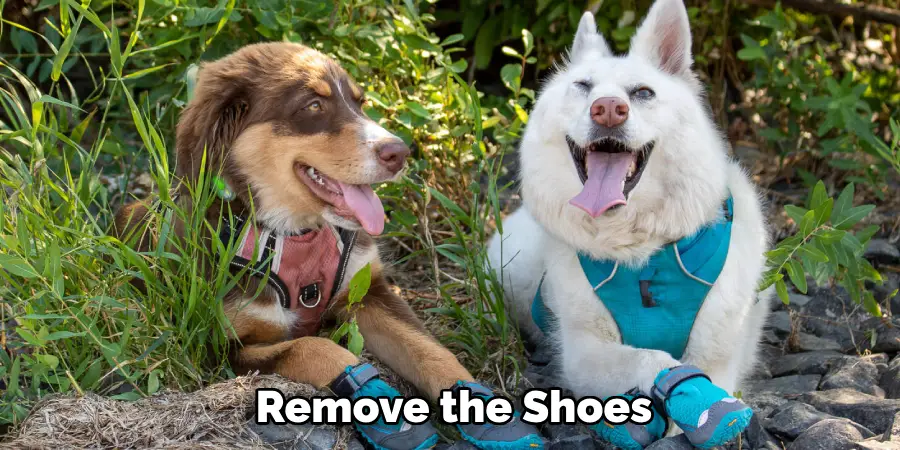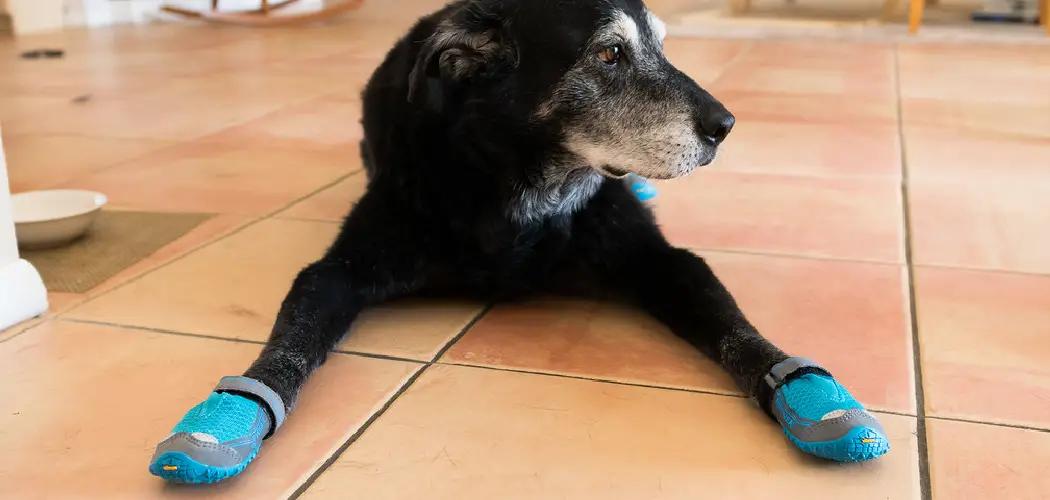Keeping dog shoes on can be a challenging endeavor for pet owners, especially when your enthusiastic canine enjoys running or playing outdoors. Dog shoes are designed to protect your dog’s paws from harsh surfaces, extreme weather, and harmful debris, ensuring their comfort and safety.
However, ensuring that these shoes stay securely on can require some patience and practice. This guide on how to keep dog shoes on will explore techniques and tips that will help keep your furry friend’s shoes in place, allowing them to frolic freely without the risk of losing a shoe.

Why Do Dogs Need Shoes?
Before delving into tips on keeping dog shoes on, it is essential to understand why dogs may need them in the first place. Some common reasons for using dog shoes include:
1. Protection From Hot or Cold Surfaces
Extreme temperatures can cause discomfort and even injury to your dog’s paws if they are exposed for prolonged periods. Dog shoes provide insulation against extremely hot or cold surfaces, allowing your pup to walk comfortably.
2. Protection From Debris
Sharp objects, such as glass or rocks, can cause cuts and other injuries to your dog’s paws while walking. Dog shoes act as a barrier between these harmful objects and your pet’s delicate paw pads, preventing potential injuries.

3. Medical Reasons
In some cases, dogs may need to wear shoes due to underlying medical conditions that affect their paw pads. These can include allergies, infections, or injuries that require protection from further irritation or damage.
Now that we understand the importance of dog shoes, let’s explore how to keep them on effectively.
8 Step-by-step Guidelines on How to Keep Dog Shoes on
Step 1: Proper Measurement
The first step to ensuring that your dog’s shoes stay on is to measure their paws accurately. Proper measurement is crucial because ill-fitting shoes, whether too tight or too loose, are more likely to slip off or cause discomfort. To measure your dog’s paws, place one paw on a piece of paper and press down gently to mimic the pressure exerted while walking.
Mark the outline of the paw and measure the width and length at the widest and longest points. Compare these measurements with the sizing guide provided by the shoe manufacturer to select the perfect size. A well-fitting shoe should be snug but not too tight, allowing for comfort and freedom of movement.
Step 2: Choose the Right Material
Selecting the appropriate material for your dog’s shoes is essential for both comfort and functionality. The material should be durable enough to withstand the type of terrain your dog frequently encounters, such as rocky paths, snow, or hot pavement. Look for materials that are not only sturdy but also breathable to prevent moisture buildup, which can lead to discomfort or infections. Some popular materials include rubber soles for traction and waterproof nylon or neoprene to keep paws dry in wet conditions.
Additionally, consider any specific needs your dog may have, such as extra padding for added comfort or lightweight fabrics for ease of movement. Choosing the right material can greatly enhance your dog’s experience and help keep their shoes securely in place during all their adventures.
Step 3: Introduce Your Dog to the Shoes
It is essential to introduce your dog to their new shoes gradually. Simply putting them on and expecting your dog to walk comfortably may lead to resistance or discomfort. Begin by allowing your dog to smell and investigate the shoes before attempting to put them on.

Once they seem comfortable, try putting one shoe on at a time, rewarding them with treats and praise for each successful step. Slowly increase the time they wear the shoes until they become accustomed to them.
Step 4: Start Indoors
Before taking your dog outside with their new shoes, it’s a good idea to let them get used to wearing them indoors first. This controlled environment allows your dog to become familiar with the sensation of walking in shoes without the added distractions and challenges of the outdoors. Begin with short sessions, letting your dog walk around the house for a few minutes at a time. Observe their behavior, watching for signs of discomfort or trouble with balance.
Gradually increase the duration of these indoor sessions, ensuring they are positive experiences by providing plenty of rewards and encouragement. This gradual acclimation can boost your dog’s confidence and comfort level, helping the shoes stay on as your dog explores their world with their new footwear.
Step 5: Proper Fit and Fastening
Proper fit and fastening are crucial to ensuring your dog’s shoes stay on during outdoor activities. Make sure the shoes are snug but not too tight, as this can cause discomfort or restrict movement. The fastenings should also be secure, such as velcro straps or buckles, to keep the shoes from slipping off when your dog is active.
Remember to check the fit and fastenings periodically, especially after prolonged use and if your dog has been running or playing vigorously.
Step 6: Consider Socks for Added Support
For dogs who have trouble keeping their shoes on due to medical conditions, consider using socks underneath the shoes. Socks provide extra cushioning and support for sensitive paws, making it more comfortable for your dog to wear the shoes for extended periods.
You can also use socks if your dog has an injury or wound that requires added protection. Make sure to choose breathable, moisture-wicking materials and to change the socks regularly to prevent any bacterial growth.
Step 7: Check for Any Irritation or Discomfort
Regularly check your dog’s paws for any signs of irritation or discomfort while wearing shoes. Some dog breeds may be more prone to allergies or irritation from certain materials, so it’s crucial to monitor their paws and make any necessary adjustments. If you notice your dog chewing or licking at their paws excessively, remove the shoes and inspect for any redness or swelling.
The shoes may need to be readjusted or replaced with a different material to prevent any further discomfort.

Step 8: Practice and Patience
As with any new experience, it takes practice and patience for both you and your dog to get used to wearing shoes. Don’t be discouraged if your dog is hesitant at first or if the shoes come off during their outdoor adventures. Continue practicing in a controlled environment and gradually increase the duration of outdoor use until your dog becomes comfortable wearing shoes for longer periods. With time and persistence, you can help keep your dog’s shoes on securely for all their exciting outings.
Following these steps on how to keep dog shoes on can greatly improve the chances of your dog’s shoes staying on and providing them with the protection and comfort they need during their outdoor activities. Remember to always prioritize your dog’s comfort and monitor their paws for any signs of irritation or discomfort. Happy adventuring!
Frequently Asked Questions
Q: Can I Use Human Shoes for My Dog?
A: No, it is not recommended to use human shoes on your dog as they are designed differently and may not fit their paws properly. It’s best to choose shoes specifically made for dogs. It’s also essential to consider the terrain and activity your dog will be doing, as human shoes may not provide enough traction or protection.
Q: How Long Can My Dog Wear Shoes?
A: The duration of time your dog can wear shoes depends on various factors, such as their comfort level and the outdoor conditions. It’s important to monitor your dog for any signs of discomfort or irritation and take breaks if necessary. Regularly check the fit and condition of the shoes to ensure they are still providing proper support and protection.
Q: What If My Dog Refuses to Wear Shoes?
A: Some dogs may be resistant to wearing shoes at first, but with patience and positive reinforcement, most dogs can learn to tolerate and even enjoy wearing them. If your dog is still refusing to wear shoes, it’s best to consult with a professional trainer or veterinarian for additional guidance and support. Remember to never force your dog to wear shoes if they are displaying signs of discomfort or distress.
Q: Are Shoes Necessary for All Dogs?
A: Not all dogs may need shoes, but they can be beneficial for certain situations such as extreme weather condition, rough terrain, or medical conditions. It’s important to assess your dog’s individual needs and consult with a veterinarian for professional advice on whether shoes are necessary for your dog.
Read Also for any new experience

Conclusion
Keeping your dog’s paws safe and comfortable during outdoor adventures can make a significant difference in their well-being and enjoyment. Dog shoes, when chosen correctly and introduced through a gradual and patient process on how to keep dog shoes on, can offer valuable protection against hot pavements, sharp objects, and cold weather.
By understanding the importance of proper fit, using the right materials, and providing positive reinforcement, you can help your dog become accustomed to their new footwear. Remember to monitor your dog’s comfort and the condition of their shoes regularly, as their needs may evolve with time and experience. Prioritizing your pet’s comfort and protection ensures that every outing is a happy and safe one. Happy adventuring with your canine companion!

